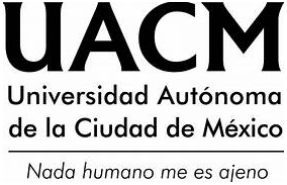POWER, PATRIMONY AND DEMOCRACY
DOI:
https://doi.org/10.29092/uacm.v6i12.133Keywords:
Cultural patrimony, fetishism of the merchandise, capitalism, hegemony, social construction of meaning, cultural and symbolic capital, value of use, aesthetic dimensionAbstract
Based on a national, bureaucratic and subordinate capitalist state, the idea of patrimony, which guides quite a few of the policies and projects in cultural management in Mexico, is functional to hegemony and the market standards. This paper discusses that building democracy and an alternative nation involves analyzing the scope and potential of cultural management. The first step is deconstructing the category of patrimony itself, which in its complex historical articulation implies social, political and economical determinations, that often remain invisible and on the sidelines in the debates on the subject.-
Downloads
References
AMIN, S. (2001), Crítica de nuestro tiempo, a 150 años del Manifiesto comunista. México: Siglo XXI.
BAUDRILLARD, J. (1974), Crítica de la economía política del signo. México: Siglo XXI.
BOURDIEU, P. (1990), Sociología y cultura. México: Grijalbo, 1990.
DA MATTA, R. (2002), Carnavales, malandros y héroes. Hacia una sociología del dilema brasileño. México: Fondo de Cultura Económica.
DE CAMPOS H. (2000), De la razón antropofágica y otros ensayos. México: Siglo XXI.
DEL BÚFALO, E. (1997), El sujeto encadenado. Caracas: Universidad Central de Venezuela-Consejo de Desarrollo Científico y Humanístico.
DE VARINE H. (1976), La culture des autres. París: Seuil.
DUSSEL, E. (1998), Ética de la liberación en la edad de la globalización y la exclusión. Madrid: Trotta.
FREIRE P. (1983), Pedagogia del oprimido. Río de Janeiro: Paz e Terra.
HOLLOWAY, J. (2002), Cambiar el mundo sin tomar el poder. Puebla: Benemérita Universidad Autónoma de Puebla.
HAUSER, A. (1979), Historia social de la literatura y el arte. Barcelona: Guadarrama-Punto Omega.
LLULL PEÑALBA, J. (2005), “Evolución del concepto y de la significación social del patrimonio cultural”, en Arte, Individuo y Sociedad, vol. 17, pp. 175-204.
GIMÉNEZ MONTIEL, G. (2005), Teoría y análisis de la cultura. 2 vols. México: Consejo Nacional para la Cultura y las Artes (CONACULTA).
GIROUX, H. (1998), Sociedad, cultura y educación. Madrid-Buenos Aires: Miño y Dórila Editores.
GRÜNER, E. (2005), La cosa política o el acecho de lo Real. Buenos Aires: Paidós.
MANDOKI, K. (2006), Estética cotidiana y juegos de la cultura. Prosaica, 1. México: CONACULTA-Fondo Nacional para la Cultura y las Artes (FONCA).
_____________ (2007), La construcción estética del Estado y de la identidad nacional. Prosaica 3. México: CONACULTA-FONCA.
NIVÓN BOLÁN, E. (2006a), La política cultural. Temas problemas y oportunidades. México: CONACULTA.
_____________ (2006b), Políticas culturales en México 2006–2020. México: Porrúa.
MARX, C. (1990), El Capital. tomo I, vol. 1, México: Siglo XXI.
Downloads
Published
Issue
Section
License
This Journal is licensed under Creative Commons Mexico 2.5. It is allowed to reproduce and disseminate the contents of the Journal for educational or research purposes, not for profit, as long as they are not mutilated and cite the source (Andamios, Revista de Investigación Social) and the author.
The copyright of the articles published in Andamios, Revista de Investigación Social are transferred by the author(s) to Universidad Autónoma de la Ciudad de México when the originals have been accepted, so that they are published and distributed both in the printed and electronic versions of the Journal. However, as established by law, the author(s) retains their moral rights. The author(s) will receive a form of assignment of copyright that they must to sign when their original has been accepted. In the case of collective articles, the signature of one of the authors will suffice, provided that the latter has obtained the consent of the others.
Authors may use the material of their article in other works or books published by themselves, with the condition of quoting Andamios as the original source of the texts.
The articles contained in this publication are the responsibility of their authors and do not compromise the official position of Andamios, Revista de Investigación Social of the Universidad Autónoma de la Ciudad de México.


